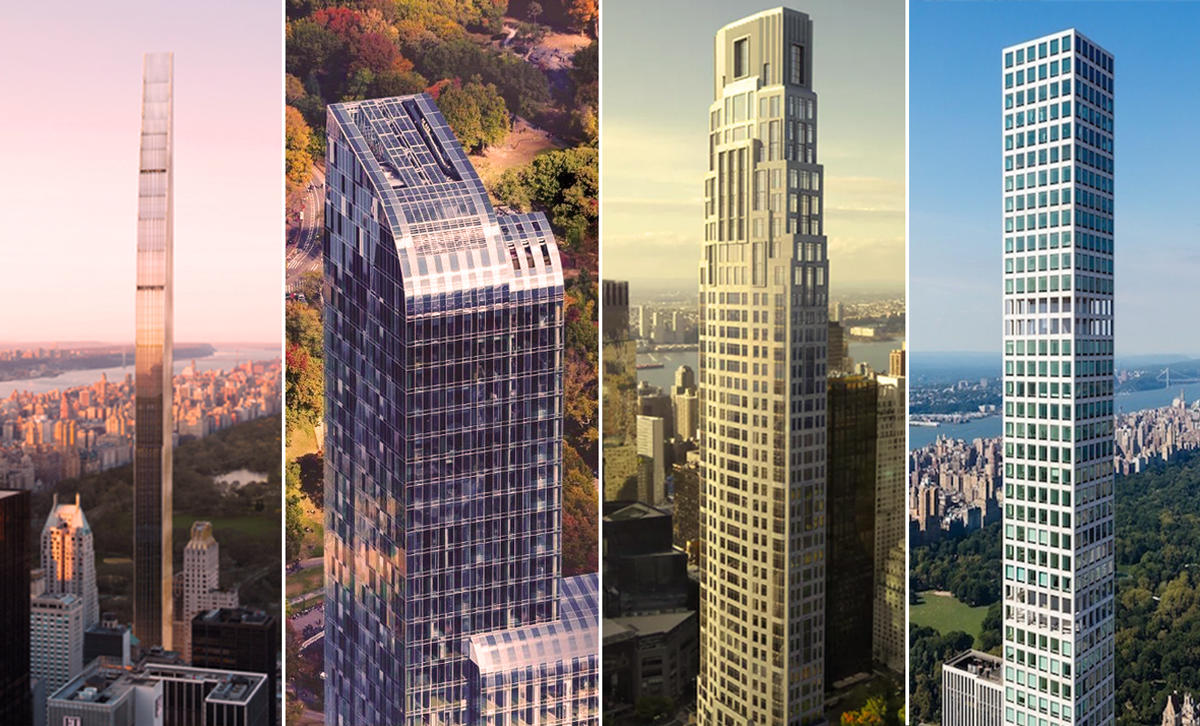Trending
How are Billionaires’ Row developers coping with the submarket’s condo inventory?
The submarket’s pipeline has ballooned to 615 units

All you need to do is look at the statistics to see why it’s a bad time to be building on Billionaires’ Row.
The Manhattan luxury market — the top 10 percent of the market — saw average prices drop by 15 percent and sales volume plummet 24 percent in 2018’s first quarter compared to the same time last year, according to Miller Samuel.
And inventory in the luxury sector rose at more than twice the rate of the overall market during that time.
More than six years after Extell Development’s 135-unit One57 launched sales and transformed the stretch of 57th Street into a luxury destination like no other, the submarket’s pipeline has ballooned to 615 units, according to an analysis by The Real Deal, which looked at the new condo pipeline — including both unsold units (minus in-contract properties) as well as units set to come online in the next few years.
Read the full story, “Inventory overload,” from our June issue
Still, One57 and Harry Macklowe’s 432 Park have roughy 30 percent of their inventory to sell.
Nonetheless, Extell’s Gary Barnett is banking on the fact that there’s one more round of luxury sales to capture with his 179-unit Central Park Tower at 217 West 57th Street.
But even he has expressed concern about new condo inventory levels across the city.
“We are absolutely concerned about the amount of supply on the market, the amount of supply that’s in the pipeline,” he said at a recent conference in Brooklyn.
“Every developer has the tendency to think their project makes sense,” he added. “They’re thinking the same thing, and at the end of the day they all come to market. I think it’s a time to be careful; let the market digest.”
But unlike Lower Manhattan or the Lower East Side, Billionaires’ Row is seeing inventory decline — the pipeline has been shrinking steadily since 2016’s third quarter.
That may be because developers are staying away, perhaps because the barrier to entry is a lot higher than it is elsewhere and because the uber-luxury market is floundering.
Other projects that TRD classified as Billionaires’ Row — even if they’re not actually on 57th Street — are Hines’ MoMA Tower at 53 West 53rd Street, which has 169 units, and Vornado Realty Trust’s 220 Central Park South, which has 87 units and where there’s a palatial four-unit combo reportedly in contract for $250 million.
But the biggest wild card on the strip is JDS Development and PMG Group’s 60-unit 111 West 57th Street, which has been plagued by infighting among capital partners as the tower rises out of the ground.
Sources said the developers changed their marketing strategy last year. Instead of an all-out blitz to attract buyers by aggressively calling brokers, the developers pulled back and went for a quieter, more exclusive process — mimicking the strategy Vornado employed at 220 CPS.
But it’s not just rival developers that Billionaires’ Row projects need to contend with. They’re also competing with investors in their own buildings, who bought units earlier in the cycle and are now looking to cash out.
Canadian billionaire Lawrence Stroll, for example, sold his 85th-story One57 pad in May for just shy of $54 million — a roughly $1.6 million haircut off the $55.6 million he paid in 2014.
At least three other units in the building have traded at a loss, and Extell kicked off a spate of sponsor unit sales earlier this year by offering deep discounts.
These resales can undercut prices for sponsors.
“A lot of buyers got in early when deals were reached with meat on the bone,” said Elliman broker Michael Graves, referring to the low prices they bought at, which offer upside for selling.
Graves added that investors feel a sense of urgency to try and sell now, fearing that if they wait too long their apartments will be “yesterday’s news.”
“There’s very little to lose by trying to sell an apartment now, knowing that if the sale doesn’t go through it will be off-market for three to six years,” he said.
And by that time, Graves believes, the next batch of luxury buyers could lose interest in the supertall towers along 57th Street.
“I believe the next wave of high-net-worth buyers, frankly, is not going to be all that interested in living on the southern quarter of Central Park,” he said.
Instead, he predicted they’d be “tech-savvy, entrepreneurial types, and they will want to be Downtown where the energy is.”
The question is, can the developers on Billionaires’ Row unload their inventory before that happens?




